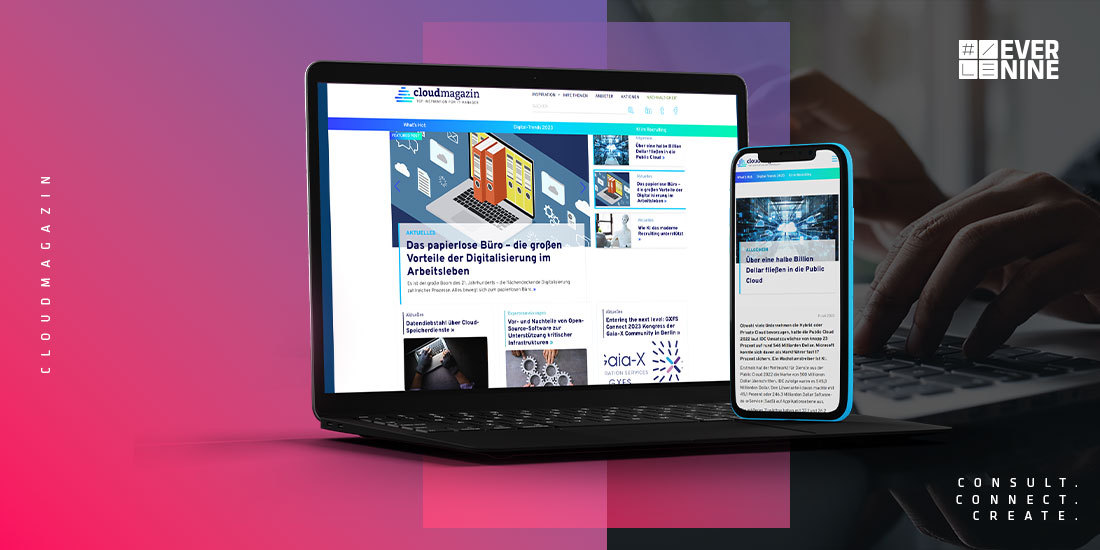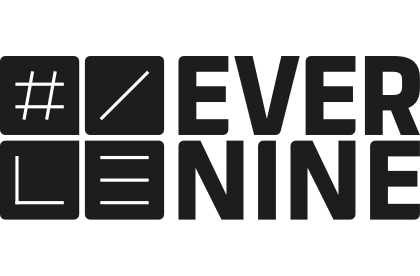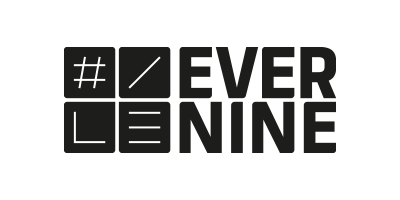
How your corporate content will finally generate revenue in 2023
Today, companies are facing growing challenges, especially due to increasing cost pressure and the growing demands on brand and digital marketing. In this article, Evernine shows how marketers can profitably optimize their content marketing in times of AI and impending inflation and finally successfully generate sales with content with five innovative approaches.
Companies are facing growing challenges in 2023. The main issue is increasing cost pressure – clearly, with the threat of recession, the pressure on marketing in particular to deploy more effective and business-generating campaigns is growing. Although many communications managers still expect marketing budgets to grow slightly, uncertainty remains high and short-term cuts cannot be ruled out. In addition, inflation is putting a strain on existing resources. At the same time, the demands on brand and digital marketing are also growing, as it is becoming increasingly important to link digital campaigns more closely to sales in order to achieve the desired results with the available marketing funds without putting a strain on the brand’s budget. Vicious circle.
Modern companies have also begun to integrate their employees into their marketing activities as ambassadors. In this way, they focus more on authenticity and are closer to potential new customers. BUT – this often results in nested communication landscapes that are centrally coordinated and controlled and should actually be an important part of a holistic strategy.
Finally, the possibilities in the MarTech area as well as AI technologies such as Chat GPT open up new opportunities for companies. However, in order to take advantage of these, they need to restructure their own content strategy and adapt existing newsroom and content hub activities to the current situation. This is because the conditions for content have fundamentally changed in 2023 and new approaches are needed to generate business with corporate content today. As a multi-award-winning communications consultancy and full-service agency, Evernine Group therefore shows companies in this article five approaches they can take to survive in this new age and develop their optimal content roadmap that will help them achieve measurable success.
***
High cost pressure? 💰
Losses in (insufficiently existing) collaboration between departments? 📉
You find yourself here?
In our Quick Guide you’ll get the tips & tricks you need for more effective,
more comprehensive corporate communication, which we call one-voice marketing 🚀
New definition of the marketing plan
So what exactly does this look like in practice? In order to target their own content to the relevant target groups, generate a real understanding of the brand among consumers, and build long-term loyalty, companies should take a critical look at their own marketing plan and redefine it if necessary. Ideally, it is important to define a total of five to six overarching themes that best summarize the company’s own services. Of these, one to two should be from the “brand loyalty” environment, another two to three from the “thought leadership” area, and then two to three product topics that are very suitable for digital campaigns.
Now you have to define different funnels for these topics, put them into a content structure that is oriented towards the new buyer groups on the market. Looking at your current topics, you will certainly notice that not all of them are up to date here and that they might need to be re-sorted and adjusted. And in the area of “brand loyalty” in particular, many companies have an enormous amount of catching up to do.

For some companies, this can mean a significant reduction to the most important core topics – for others, a new thematic understanding for a marketing plan that focuses specifically on content and matching services. The decisive factor here is differently designed content that addresses the desired customers precisely at the right point in their individual customer journey.
Target persons who are at the far end of the funnel, for example, can be reached with painpoint-oriented, general content, while groups further inside the funnel should be addressed directly and precisely with regard to their challenges and in a USP-oriented manner.
Employees as an additional key to success
A successful content strategy also depends on the willingness and commitment of a company’s own employees to participate in corporate communications as authentic communicators. This also requires employees to be aware of their own presence on social networks. Evernine summarizes this under the terms “Digital Me” and “Digital Us.” Looking at the CEO-LinkedIndex, in which the LinkedIn activities of all CEOs from DAX, MDAX and TecDAX were analyzed for a year, it becomes clear that the communicative performance of stakeholders and executives from the company has significantly more reach than the company account itself.
Many modern companies are already doing this – here, it is primarily a matter of rethinking employees, letting them communicate and perform in such a way that they pursue individual interests on the one hand (Digital Me) and represent the interests of the company on the other (Digital Us) and create a communal WE. This approach must be harmonized within the framework of an ambassador strategy.
In this context, it is essential to promote the intrinsic motivation of employees – i.e., the individual motivation of employees to participate in the company’s digital communication and to distribute the content from the new marketing plan and to clearly define their individual participation in the activities with them in advance.
Some would rather participate in the social topics, others prefer to proactively participate in the responsibility topics for personal career reasons, while still others would rather identify with the campaign topics.

The right structure is crucial
Many companies already have newsrooms in place, for example in the form of a corporate blog, and use them as an important tool for their corporate communications. They are therefore particularly well suited to presenting corporate communications in a comprehensive and brand-oriented way. But they are not always sufficient for a comprehensive content strategy. Ideally, they should be supplemented by a company’s own content hub.
As a content and technological foundation, content hubs form the basis for unique marketing and post-PR activities. At the same time, well-positioned content hubs are crucial for companies to take advantage of new developments in the AI field, keyword Chat GPT. After all, the benefits of fast and simple content generation using AI programs only have a positive impact if effective content distribution is also possible. This makes it possible to break new ground in the digital world, for example, and innovative content formats such as scrollytelling, podcasts or videos can be quickly and easily integrated into the overall concept. In this way, content hubs are also able to react agilely and at short notice to new trends. You can also read about the other advantages that companies have through the use of content hubs in this article.

When designing their specific content hubs, companies should take advantage of the halo effect, which states that content primarily reaches its chosen target groups when it is placed in as neutral an environment as possible. In this way, companies benefit from more credibility, for example when it comes to thought leadership topics. Depending on the individual strength of their own brand, companies can make their content environment brand-oriented or topic-oriented.
The architecture should also include an engaging substructure, landing pages with appropriate CTAs for lead generation, and a data and tracking system. Evernine has set up and successfully operates such an architecture for its client company Axians with the content hub “Digital Chiefs”. In news, technical articles and other formats, experts from Axians and other partners talk here about the challenges and opportunities of digitization in Germany and thus reach their relevant target groups.
The right use of AI
Companies should be aware that AI is not yet capable of actually writing texts. But it is now indispensable for the operation of the content hub – for example, for news creation or even for researching topics in advance.

With a content hub architecture and technological environment, companies can take advantage of the benefits offered by AI programs such as Chat GPT. This is because they facilitate both research and the creation of articles and thus simplify the editorial operation of their own content hubs.
This opens up new opportunities for companies to react agilely to current topics and market developments. In doing so, however, they should pay strict attention to acting in accordance with the predefined content strategy.
Agile project management as the key to success
To make enterprise content truly successful now, all the steps you’ve gone through so far should be constantly scrutinized. Agility is the key word here. Because without agile project management and the constant assurance of content, you can no longer get by in the content environment today.
Modern tracking measures, for example, enable companies to work agilely today. By using them, project managers can keep a constant eye on the performance of their content environments. Pre-defined KPIs such as dwell time, lead volumes, click through rates (CTRs) and visitor sources help them to do this. This enables them to evaluate the use of different content formats and continuously optimize them. Based on the figures and performance monitoring, companies can also test new content formats such as videos in the right places and thus profitably expand the existing content strategy.
***
Are you already using your own content as part of your corporate communications and would like your digital campaigns to finally be successful?
Learn in our “One Voice Guide”,
which strategy leads to real business opportunities.
***
Source title image: Evernine Group.



